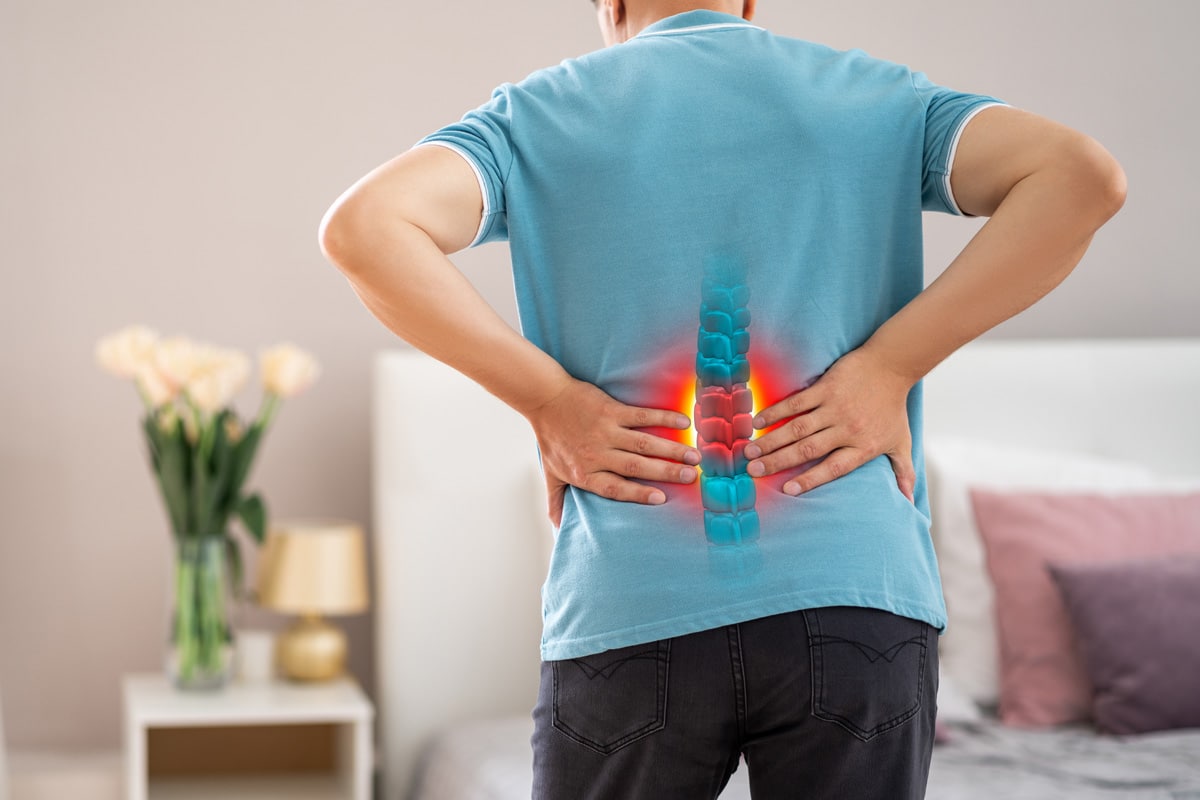Orthopedic conditions, ranging from arthritis to herniated discs, are common ailments that can significantly impact daily life and physical function. These conditions, which often involve the musculoskeletal system, can result from a variety of factors – aging, injury, and even lifestyle choices. As we begin to explore the intricacies of these conditions, including their symptoms, causes, and treatments, the magnitude of their societal impact becomes all the more evident. This understanding prompts a deeper investigation into the world of orthopedics, and the steps we can take towards prevention and efficient management.
Understanding Orthopedic Conditions
To delve into the realm of orthopedic conditions, one must first comprehend the intricate structure and functions of the musculoskeletal system, which can be affected by a myriad of these disorders. These include conditions like osteoarthritis, rheumatoid arthritis, and various bone fractures. In essence, orthopedic conditions involve any disorder or injury of the body’s musculoskeletal system, impacting the body’s ability to move and perform daily activities.
Orthopedic surgeries stand as one of the mainstream solutions to treat these conditions. Surgeons perform these procedures to address and rectify issues ranging from spinal disorders to joint replacements. Rehabilitation strategies post-surgery are crucial to restoring normal function. These strategies often involve physical therapy exercises to regain strength, flexibility, and mobility, coupled with pain management techniques.
Understanding orthopedic conditions necessitates a grasp of the complexities of the musculoskeletal system, the potential impact of these conditions on quality of life, and the importance of orthopedic surgeries and rehabilitation strategies. This knowledge allows patients and healthcare professionals to approach treatment with an informed perspective, ultimately leading to improved patient outcomes.
Symptoms of Arthritis
Arthritis, a common orthopedic condition, presents itself typically through a variety of symptoms that we will examine. We will explore the most common signs of this disease, with a specific focus on the painful joint conditions that are often the most recognizable manifestation. Additionally, we will discuss the significant impact arthritis can have on an individual’s mobility, complicating daily activities and overall quality of life.
Arthritis: Common Signs
Individuals suffering from arthritis often experience a variety of telltale signs, including persistent joint pain, stiffness, and swelling. These symptoms can be managed with an appropriate arthritis diet and regular exercise, both of which offer significant benefits. A well-balanced arthritis diet primarily consists of anti-inflammatory foods that help to reduce inflammation in the joints, thus alleviating pain and stiffness. Regular physical activity, on the other hand, helps to maintain joint flexibility and improve muscle strength. It is important to note that the severity and frequency of these symptoms can vary greatly among individuals. Early recognition of these signs and appropriate intervention can go a long way in managing arthritis effectively and improving the quality of life.
Painful Joints: A Closer Look
Building upon the general understanding of arthritis, we now turn our focus to a more detailed exploration of the discomforting symptom prominently associated with this condition: painful joints. This discomfort is primarily due to joint inflammation, which is the body’s natural response to injury or disease.
Some specific characteristics of arthritis-related joint pain include:
- Pain that intensifies with activity but eases with rest
- Stiffness in the joint, especially upon waking or after periods of inactivity
- Swelling or warmth around the affected joint
Pain management is key in dealing with arthritis, and it often involves a combination of medication, physical therapy, and lifestyle changes. By understanding the nature of joint pain, patients and healthcare providers can work together to implement strategies that reduce discomfort and enhance quality of life.
Arthritis’s Impact on Mobility
The profound impact of arthritis on an individual’s mobility, manifesting in symptoms such as difficulty walking or climbing stairs, significantly alters their daily activities and overall quality of life. Following an arthritis diagnosis, patients often experience joint pain and stiffness, especially in the morning or after periods of inactivity. This can lead to a decreased range of motion, thus limiting their ability to perform routine tasks independently.
To mitigate these challenges, healthcare providers often recommend the use of mobility aids. Canes, walkers, and wheelchairs can provide the necessary support and improve patient safety. The use of these aids, combined with therapeutic exercises and medication, can help manage the symptoms and enhance mobility, allowing individuals to lead a more active and fulfilling life despite their condition.
Osteoporosis and Bone Health
Understanding osteoporosis — a widespread condition characterized by fragile bones — is crucial to enhancing overall bone health and preventing potential complications. Lifestyle choices greatly influence the onset and progression of osteoporosis, with dietary influence and exercise benefits playing key roles.
- Dietary Influence: A balanced diet rich in calcium and vitamin D is crucial for bone health. Dairy products, leafy green vegetables, and fortified foods are excellent sources of these nutrients.
- Exercise Benefits: Regular weight-bearing and strength-training exercises can help improve bone density and strength. These exercises include walking, jogging, climbing stairs, lifting weights, and yoga.
- Regular Check-ups: Regular bone density tests can help detect osteoporosis early, allowing for timely treatment.
Osteoporosis is not just an inevitable part of aging. With consistent effort, it’s possible to maintain strong bones and limit the risk of fractures. Proper nutrition and regular exercise are powerful tools in this endeavor. It’s also important to avoid behaviors that can harm bone health, such as smoking and excessive alcohol consumption. Lastly, regular check-ups and communication with healthcare providers can ensure early detection and appropriate management of osteoporosis.
Carpal Tunnel Syndrome Explained
Shifting our focus from osteoporosis, another common orthopedic condition worth discussing is Carpal Tunnel Syndrome, a painful and progressive condition that affects the hand and wrist. This syndrome arises due to the compression of the median nerve passing through the carpal tunnel, a narrow passage bound by ligaments and bones.
Symptoms typically include numbness, tingling, and weakness in the hand, particularly the thumb and the first three fingers. As the condition progresses, these symptoms can become more persistent, often leading to discomfort and reduced hand function.
One of the most effective and non-invasive treatments for Carpal Tunnel Syndrome is the use of wrist bracing. The benefits of wrist bracing include providing support to the wrist, reducing pressure on the median nerve, and allowing inflamed tissues to rest and recover.
Additionally, ergonomic adjustments at work and home can significantly alleviate symptoms and prevent the progression of the condition. These adjustments can involve using specially designed keyboards, mouse devices, and workstations that promote a neutral wrist posture.
Understanding and managing Carpal Tunnel Syndrome effectively requires a multi-faceted approach, including a combination of medical interventions, wrist bracing, and ergonomic adjustments.

Dealing With Sciatica
Sciatica, a prevalent orthopedic condition, is often misunderstood despite its significant impact on quality of life. To effectively manage this condition, it is crucial to comprehend its root causes and the diverse range of available treatment modalities. This section will discuss these points, providing a comprehensive understanding of the intricacies of dealing with sciatica.
Understanding Sciatica Causes
In order to effectively manage sciatica, it is crucial to first delve into the various underlying causes of this debilitating condition. The root cause is typically pressure or damage to the sciatic nerve, which can occur due to various reasons. Sciatica diagnosis is critical for implementing effective prevention strategies.
- Herniated or slipped discs: This is the most common cause, wherein the disc’s inner fluid leaks out, irritating the nearby sciatic nerve.
- Spinal stenosis: Narrowing of the spine in the lower back can compress the nerve, leading to sciatica.
- Spondylolisthesis: One vertebra slipping forward over another can compress the nerve.
Understanding these causes helps in sciatica prevention and facilitates better management of the condition. Ultimately, accurate diagnosis is crucial for effective treatment planning.
Effective Sciatica Treatments
Having explored the different causes of sciatica, we can now turn our attention to the variety of treatments available that aim to alleviate this condition’s symptoms and improve the quality of life for sufferers. Non-surgical interventions are usually the first line of treatment for sciatica, consisting primarily of physical therapy and pain management strategies. Physical therapy can include stretching exercises, massage, and heat or cold therapy. Pain management might involve over-the-counter pain relievers, or in more severe cases, prescription drugs. Sciatica prevention strategies are also essential, with emphasis on maintaining proper posture, regular exercise to strengthen the back muscles, and maintaining a healthy weight. In refractory cases, minimally invasive procedures may be considered.
Rotator Cuff Injuries
Among the most common orthopedic issues, rotator cuff injuries often result from strain, aging, or injury to the shoulder. Such injuries can lead to significant shoulder pain and impairment, and may necessitate rotator cuff rehabilitation. Shoulder impingement syndrome, a common cause of rotator cuff injuries, involves the tendons of the rotator cuff muscles becoming impinged as they pass through a narrow bony space in the shoulder.
Rotator cuff injuries can be categorized into three main types:
- Tendonitis: This is the inflammation of the tendons in the shoulder, often caused by repetitive shoulder activities.
- Bursitis: This involves the inflammation of the bursa, a sac filled with lubricating fluid, located between tissues such as bone, muscle, tendons, and skin.
- Strains and Tears: These injuries can range from mild strains to complete tears of the muscle or tendon.
Early diagnosis and appropriate treatment of these injuries are crucial in preventing further damage and achieving successful rotator cuff rehabilitation. Treatment may involve rest, physical therapy, medication, and in some severe cases, surgery. The goal is to reduce pain, improve shoulder function, and restore the patient’s quality of life.
The Impact of Tendonitis
Focusing on one of the primary types of rotator cuff injuries, tendonitis significantly impacts the shoulder’s functionality and can cause persistent discomfort if not addressed promptly. As an inflammation or irritation of a tendon, tendonitis often results from overuse or aging. This condition can lead to a decreased range of motion, swelling, and severe pain in the affected area.
In understanding the impact of tendonitis, it’s critical to consider its prevention strategies. Tendonitis prevention hinges on the incorporation of regular exercises to strengthen muscles, adequate rest periods between physical activities, and maintaining proper form and posture during exercises. Additionally, the adoption of ergonomic practices at work and home can significantly reduce the risk of developing tendonitis.
Tendonitis recovery requires a comprehensive approach that includes physical therapy, medication, rest, and in severe cases, surgery. Physical therapy exercises focus on improving flexibility and strength, while medication helps manage pain and inflammation. Rest is crucial to allow the inflamed tendon to heal. In instances where conservative treatments fail to provide relief, surgery may be necessary to repair the damaged tendon. Thus, the impact of tendonitis is profound, but with appropriate prevention and recovery strategies, it can be managed effectively.
Fractures and Breaks
In the realm of orthopedic conditions, fractures and breaks represent a significant portion, characterized by the disruption or damage of the continuity of bone. These injuries often result from high force impact or stress, such as that experienced in falls, accidents, or sports injuries. The healing process and prognosis of fractures and breaks largely depend on the location, severity, and the patient’s overall health, including their bone density.
Fractures and breaks can manifest in various forms:
- Simple Fracture: Also known as a closed fracture, this type of break does not penetrate the skin.
- Compound Fracture: This is an open fracture where the broken bone punctures the skin, potentially leading to infection.
- Comminuted Fracture: This denotes a scenario where the bone shatters into three or more pieces.
Understanding the type of fracture or break is crucial in determining the appropriate treatment protocol. The healing process often involves immobilization using casts or splints, pain management, and in serious cases, surgical intervention. Maintaining healthy bone density can aid in faster recovery, prevent complications, and reduce the risk of future fractures.
Bursitis: A Common Issue
While fractures and breaks are prevalent in the field of orthopedics, another common issue that cannot be overlooked is Bursitis, an often painful condition that affects the small, fluid-filled sacs — called bursae — which cushion the bones, tendons, and muscles near the joints. This condition typically occurs when bursae become inflamed, often due to repetitive motion or pressure.
Bursitis diagnosis involves a careful physical examination, possibly supplemented by imaging tests such as an MRI or ultrasound. A healthcare provider may also analyze a small sample of bursa fluid to rule out infection or gout.
Bursitis prevention, on the other hand, involves taking steps to avoid the causes of inflammation. This can include avoiding repetitive actions that can irritate the bursae, using padding to decrease the impact on the joints, and practicing good posture. Regular stretching and strengthening exercises can also help maintain joint mobility and prevent bursitis.

Managing Herniated Discs
Shifting our attention towards another prevalent orthopedic condition, let us explore the management of herniated discs, a condition characterized by the bulging or rupture of one or more of the discs that act as cushions between the bones of the spine. This condition can cause severe pain, numbness, or weakness in the limbs and requires effective management and prevention strategies.
Non-surgical remedies for herniated discs can play a crucial role in managing the condition. These may include:
- Physical therapy and exercise: Regular gentle exercise can help to ease pain and prevent further disc damage.
- Medication: Non-prescription pain relievers, muscle relaxants, and anti-inflammatory drugs can be used to manage the pain associated with herniated discs.
- Lifestyle modifications: Maintaining a healthy weight, practicing good posture, and avoiding activities that strain the spine can contribute to disc pain prevention.
In addition to these measures, patients may also benefit from complementary therapies such as massage, acupuncture, or chiropractic treatments. The goal is to alleviate symptoms, improve mobility, and enhance the quality of life for individuals dealing with this debilitating condition. As always, patients should consult with a medical professional to determine the best course of action for their specific condition.
Bunions and Foot Health
Turning our focus to the lower extremities, bunions, a common foot health issue characterized by a bony bump that forms at the base of the big toe, require careful attention and management. Bunions develop when the pressure from footwear selection or weight bearing activities causes an unnatural, chronic deformation of the joint at the base of the big toe. This results in a pronounced protrusion that can cause discomfort and affect mobility.
Bunion prevention is crucial in maintaining optimal foot health. One of the primary ways to prevent bunions is through careful footwear selection. Shoes that are too tight or have very high heels can place undue pressure on the toes, thereby encouraging the formation of bunions. Comfortable, well-fitted shoes with a wide toe box are ideal.
Additionally, regular foot exercises can help strengthen the foot muscles and maintain proper alignment of the toes. Maintaining a healthy weight can also alleviate pressure on the feet. It is important to note that while these strategies can help prevent or slow the progression of bunions, they do not constitute a cure. Once a bunion is formed, it will not disappear without proper medical intervention.
Treatment Options for Orthopedic Conditions
Frequently, a broad range of treatment options are available for orthopedic conditions, each tailored to the specific needs and severity of the patient’s condition. These approaches balance the patient’s lifestyle, condition severity, and overall health status.
Non-surgical solutions often serve as the first line of treatment, involving less invasive procedures, such as medication, physical therapy, or lifestyle modifications. Meanwhile, Rehabilitation Techniques play a crucial role in restoring the patient’s mobility and function after an injury or surgery.
Here are some common treatment options:
- Physical Therapy: This involves exercises designed to improve movement and strength. It’s an essential part of recovery from many orthopedic conditions.
- Medication: Non-steroidal anti-inflammatory drugs (NSAIDs) can help manage pain and reduce inflammation in the affected areas.
- Surgery: For severe cases, orthopedic surgery, including joint replacement or arthroscopy, may be necessary.
The choice of treatment should be a shared decision between the patient and the healthcare provider. It’s based on careful consideration of the benefits and risks, the patient’s preferences, and the provider’s expertise. Ultimately, the goal is to reduce pain, improve function, and enhance the quality of life.
Frequently Asked Questions
What Are Some Preventative Measures One Can Take to Avoid Common Orthopedic Conditions?
To prevent potential musculoskeletal issues, individuals can employ strategies such as posture correction and leveraging ergonomic advancements. Regular exercise, maintaining a healthy weight, and avoiding repetitive movements also contribute to overall musculoskeletal health.
How Do Lifestyle Choices Like Diet and Exercise Impact Orthopedic Health?
Lifestyle choices significantly impact orthopedic health. Balanced diet and regular exercise strengthen bones and muscles, reducing stress impact. Conversely, habits like excessive alcohol consumption can weaken the skeletal system, increasing susceptibility to orthopedic issues.
Are Certain Demographics More Prone to Orthopedic Conditions Than Others?
Yes, certain demographics are indeed more susceptible to orthopedic conditions. Factors such as genetic predispositions can play a role, as can occupational risks associated with physical labor or sedentary work environments.
How Often Should One Seek Professional Check-Ups for Orthopedic Health?
The frequency of professional check-ups for orthopedic health varies based on individual needs. However, utilizing Orthopedic Telemedicine and taking Joint Supplements regularly can aid in maintaining optimal orthopedic health between physical appointments.
What Is the Recovery Process Like After Surgery for an Orthopedic Condition?
The recovery process after orthopedic surgery typically involves post-surgery rehabilitation programs and pain management techniques. The focus is on restoring functionality, enhancing mobility, and reducing pain to improve overall quality of life.

